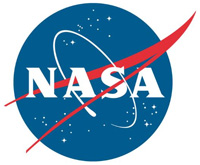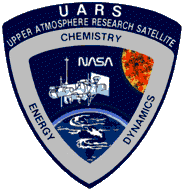 NASA’s Upper Atmosphere Research Satellite, or UARS, was expected to re-enter Earth’s atmosphere Re-entry was expected between 11:45pm Friday, September 23rd, and 12:45am, September 24th, Eastern Daylight Time (3:45am to 4:45am GMT), almost six years after the end of a productive scientific life. During that time period, the satellite was passing over Canada and Africa, as well as vast areas of the Pacific, Atlantic and Indian oceans.
NASA’s Upper Atmosphere Research Satellite, or UARS, was expected to re-enter Earth’s atmosphere Re-entry was expected between 11:45pm Friday, September 23rd, and 12:45am, September 24th, Eastern Daylight Time (3:45am to 4:45am GMT), almost six years after the end of a productive scientific life. During that time period, the satellite was passing over Canada and Africa, as well as vast areas of the Pacific, Atlantic and Indian oceans.
Most of the bus-sized satellite was expected to burn up as it reenters the Earth’s atmosphere, but certain parts may have survived the reentry and fallen anywhere from Canada to South America or from Siberia down to Africa or Australia. Since our planet is more than two thirds water, the probability is that the debris will fall into an ocean someplace rather than hit land.

The risk to public safety was very remote.
NASA is currently working to confirm the re-entry location and time and will provide an update shortly.
Spaceweather.com has posted a series of updates from observers, along with several photos of the Satellite’s trail as it headed for reentry.
Observers in central Texas saw UARS streaking overhead (but not disintegrating) at 8:18pm CDT on September 23rd. It was spotted again over western Colorado at ~9:46pm CDT (“Still intact, but tumbling,” says observer Scott Sheriff) and again over Minnesota at 9:55pm CDT. Since then, however, no observers have reported seeing the doomed satellite. NASA’s estimated window for re-entry (between 11:45pm September 23rd and 12:45am September 24th EDT) has passed, so UARS might be no more.
Since the beginning of the Space Age in the late-1950s, there have been no confirmed reports of an injury resulting from re-entering space objects. Nor is there a record of significant property damage resulting from a satellite re-entry.
The satellite’s orbit has been tracked by the Joint Space Operations Center of U.S. Strategic Command at Vandenberg Air Force Base, CA., which works around the clock detecting, identifying and tracking all man-made objects in Earth orbit, including space junk.
Determining the actual time of re-entry has been difficult to predict because of a variety of factors including solar flux, atmospheric conditions, and the spacecraft’s orientation as its orbit decays. Because the satellite’s orbit is inclined 57 degrees to the equator, any surviving components of UARS will land within a zone between 57 degrees north latitude and 57 degrees south latitude. It is impossible to pinpoint just where in that zone the debris will land, but NASA estimates the debris footprint will be about 500 miles long.
If you find something you think may be a piece of UARS, do not touch it. Contact a local law enforcement official for assistance.
About the Upper Atmosphere Research Satellite
 The satellite was launched in 1991 by the Space Shuttle Discovery. It is 35 feet long, 15 feet in diameter, weighs 13,000 pounds, and carries 10 instruments. UARS orbits at an altitude of 375 miles with an orbital inclination of 57 degrees. Designed to operate for three years, six of its ten instruments are still functioning. UARS measures ozone and chemical compounds found in the ozone layer which affect ozone chemistry and processes. UARS also measures winds and temperatures in the stratosphere as well as the energy input from the Sun. Together, these help define the role of the upper atmosphere in climate and climate variability.
The satellite was launched in 1991 by the Space Shuttle Discovery. It is 35 feet long, 15 feet in diameter, weighs 13,000 pounds, and carries 10 instruments. UARS orbits at an altitude of 375 miles with an orbital inclination of 57 degrees. Designed to operate for three years, six of its ten instruments are still functioning. UARS measures ozone and chemical compounds found in the ozone layer which affect ozone chemistry and processes. UARS also measures winds and temperatures in the stratosphere as well as the energy input from the Sun. Together, these help define the role of the upper atmosphere in climate and climate variability.


